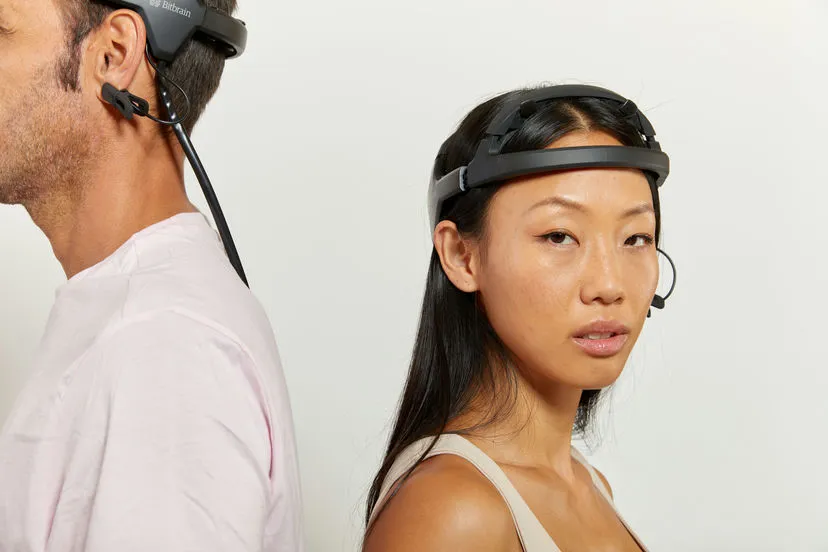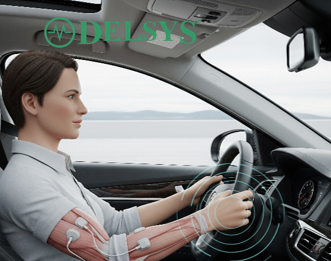Introduction
Brain Computer Interface (BCI) sometimes called as Brain Machine Interface (BMI) is a new cutting edge technology emerging at a rapid speed. This interface allows a direct connection between an external device and the human mind. This means we can remove the physical link of input devices like – keyboards, mouse, touch screen and others and communicate and send commands directly from our brain. It taps into our neural signals and interprets and translates them and then sends over these commands directly to the respective digital systems. If you think about it, wouldn’t it be wonderful to get things done, just by thinking about them? This is no longer science fiction, and to get closer to this reality, we now see a lot of rapid developments in areas like eye tracking and electroencephalography (EEG) systems, which are step by step making this form of interaction more practical and accessible. So what are these eye tracking and EEG systems that are powering the next generation brain and computer interfaces? Lets delve into them in detail, starting with Eye Tracking.
Table of Contents
- Eye Tracking Systems
- Dry EEG Systems
- EEG + Eye Tracking: A powerful combination for BCI
- Mock Up Application
- Conclusion
- Frequently Asked Questions (FAQ)
Eye Tracking Systems
Eye tracking is a technology that monitors and records where a person is looking and how long they fixate on specific points. It does so by recording the patterns of their eye movements. It uses specialized cameras and infrared light sensors, which precisely capture the position and movement of the eyes in real time. This data helps determine what captures a person’s attention and provides insights into visual behaviour, focus, and intent.
Tobii AB provides a successful eye tracking technology, offering a range of products designed for research and BCI applications including –
- Tobii Pro Fusion – A high-performance eye tracker ideal for experiments that require precise gaze data at high sampling rates.
- Tobii Pro Glasses 3 – Wearable eye tracking glasses that capture natural eye movement in real-world environments.
- Tobii Spark – An integrated eye tracker optimized for consumer applications, providing easy integration with interactive systems.
These devices are not only non intrusive but also highly precise, providing integral information that help in developing brain-computer interfaces. By knowing exactly where the user is looking, their intent and visual behaviour, we can segregate neural signals from noise and make better sense of what the user wants to achieve. Imagine you want to interact with a computer system purely through eye movement. The Tobii eye tracker can monitor where you are looking on the screen. By simply gazing at icons or buttons for a set amount of time you could select them. This can allow you to open applications, use them, control them, all without the use of hands.
Dry EEG Systems
Now lets move on to EEG systems and their role in the rapid development of Brain-Computer Interfaces.
Electroencephalography (EEG) is a non-invasive technique that records the brain’s electrical activity through electrodes placed on one’s scalp. Traditionally it used to be a hectic process with bulky systems and gel usage. The data could only be collected inside a lab as the systems were too heavy and wired to be portable and noise could highly affect the signal. The Bitbrain Diadem solves this problem. It captures real time neural signals related to cognitive states like attention, focus, mental commands, and emotional responses, all through headsets that are lightweight, unwired, adjustable and capable of working out of the confines of lab settings. These EEG systems can be rapidly deployed in a lot of dynamic situations creating a window to the brain.
You could trigger a robotic arm to move just by imagining hand movement. However, EEG signals are often noisy and complex, especially outside laboratory conditions. This is where the synergy with eye tracking becomes crucial.
EEG + Eye Tracking: A Powerful Combination for BCI
The combination of these two powerful systems could create a system that could be highly intuitive, adaptable and reliable. The Bitbrain Diadem dry EEG headset records the user’s brain electrical activity in real time, capturing brainwave patterns related to cognitive states, meanwhile a Tobii Pro Fusion eye tracker continuously tracks the user’s gaze – monitoring where they are looking, how long they focus, and their eye movement patterns. By merging these two data one could create a system that can better understand user intent.
If the user looks at a button on screen and thinks about “selecting” it, the BCI confirms the command only when both the gaze data (from Tobii) and the brain pattern (from Bitbrain) indicate the same intention. It would create a Brain Computer Interface system that has:
- Increased Accuracy
- Faster Response Times
- Enhanced User Comfort
- Better Signal to Noise Detection
Mock Up Application
Let’s discuss a mock-up scenario that can give you better insights about the application and usage of this technology. We have an engineer who has limited movement in her arm and hand because of a medical condition. Her work requires using digital systems like – laptops and iPads, but due to her condition it’s turning out to be quite difficult for her.
Suppose we get her a system consisting of Bitbrain Diadem dry EEG headset, which comfortably records her brain’s electrical activity and Tobii Pro Glasses 3, which unobtrusively tracks her eye movements in real time as she looks at the computer screen. Now we have an interface where she can simply look at the icon she wants to open and the eye tracker can precisely identify which application she wants to open and the Bitbrain diadem could monitor her brain waves to recognise a specific pattern that indicates intentional selection and when both the signals align, the interface can open the application she wants, without her having to move her hands.
This kind of solution is ground-breaking for people with mobility issues and impairments, making them independent. With these devices, we can help turn futuristic concepts into real life solutions. In fact their usage spreads over a variety of different fields like –
- Smart Home Automation: Gaze and thought-based control of home appliances (lights, TV, air conditioning, blinds)
- Gaming and VR: Gameplay where players interact naturally without physical controllers
- Education and Learning: Personalized learning by adapting content based on gaze patterns and cognitive states
- Healthcare Technology: Hands-free computer control for people with motor impairments or disabilities
- Cognitive Neuroscience Research: Exploring decision-making processes by combining gaze data with brain activity
Conclusion
As technology continues evolving, with the integration of EEG and Eye Tracking systems, the stage is being set for a new era of human-computer interaction. This approach focuses on understanding us at the cognitive level, interpreting not just what we see, but also what we mean.We’re still in the early stages of this innovation which promises smarter algorithms, greater accessibility, and more affordable solutions. In short, this is just the beginning of a revolution where we can control our surroundings not just by our hands, but also by our minds and eyes.
Frequently Asked Questions
1. What are the primary devices highlighted for EEG and eye tracking in BCIs?
The key devices are the Bitbrain Diadem (a lightweight, wireless dry EEG headset for real-time brain activity capture) and Tobii’s eye tracking line-up, including Tobii Pro Fusion (for high-precision lab experiments), Tobii Pro Glasses 3 (wearable for real-world use), and Tobii Spark (for seamless consumer integrations). These enable non-intrusive, synergistic BCI systems
2. How does eye tracking technology work in BCIs?
Eye trackers, wearable & screen based, use specialized cameras and infrared sensors to monitor eye position, movements, and fixation duration in real time. It reveals attention, visual behaviour, focus, and intent, helping BCIs filter neural noise and interpret user goals, such as selecting screen elements by gazing at them
3. What is dry EEG, and how does it advance BCIs?
Dry EEG is a non-invasive method to record scalp electrical activity without gels, using lightweight, wireless headsets like the Bitbrain Diadem. It captures real-time signals for cognitive states (e.g., attention, mental commands) in dynamic environments, overcoming traditional EEG’s bulkiness, wiring, and lab limitations.
4. How does the Bitbrain Diadem improve traditional EEG for BCIs?
The Bitbrain Diadem is an adjustable, unwired headset that deploys quickly outside labs, recording neural signals related to focus, emotions, and commands. It enables applications like triggering a robotic arm via imagined movements, despite noisy real-world conditions, by providing a portable “window to the brain.”
5. What benefits does the EEG + eye tracking combo offer for BCI users?
It creates intuitive, reliable systems with:
- Increased Accuracy: Dual confirmation reduces errors.
- Faster Response Times: Real-time merging speeds up command execution.
- Enhanced User Comfort: Non-intrusive, wireless wearables for natural use.
- Better Signal-to-Noise Detection: Filters out distractions in non-lab settings.
If you’d like to dive deeper into any particular study or point, feel free to ask us at parag@tidentech.com or tidentech@gmail.com or call us on +91 9987442274.








